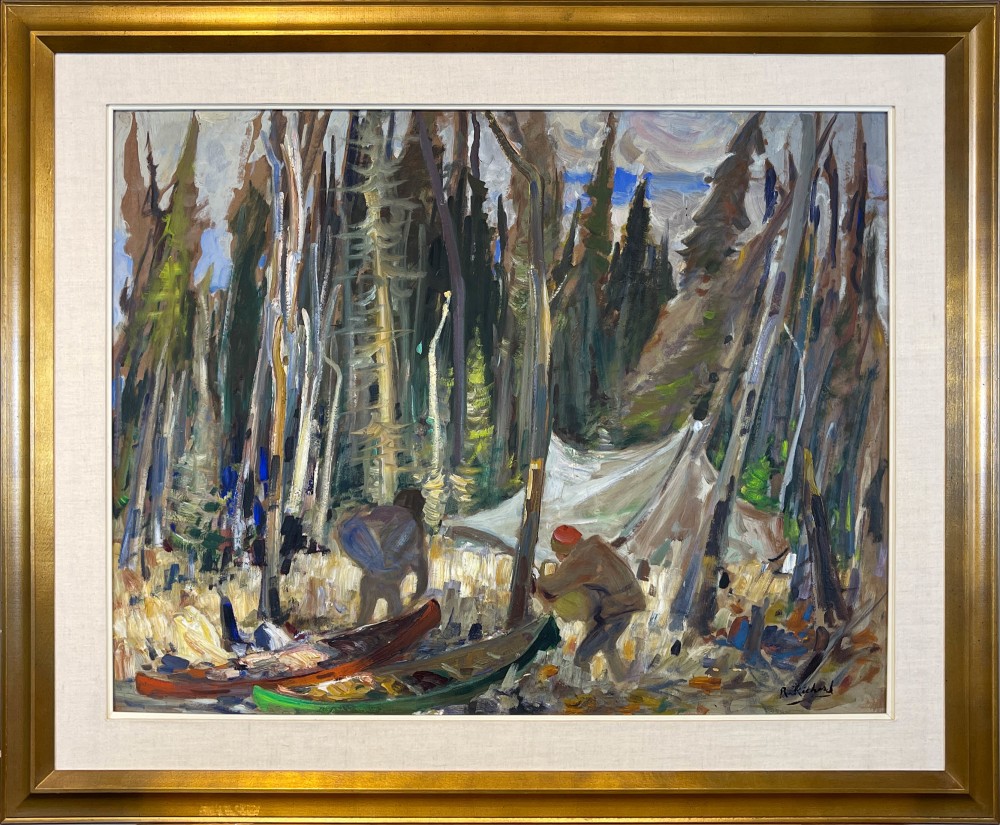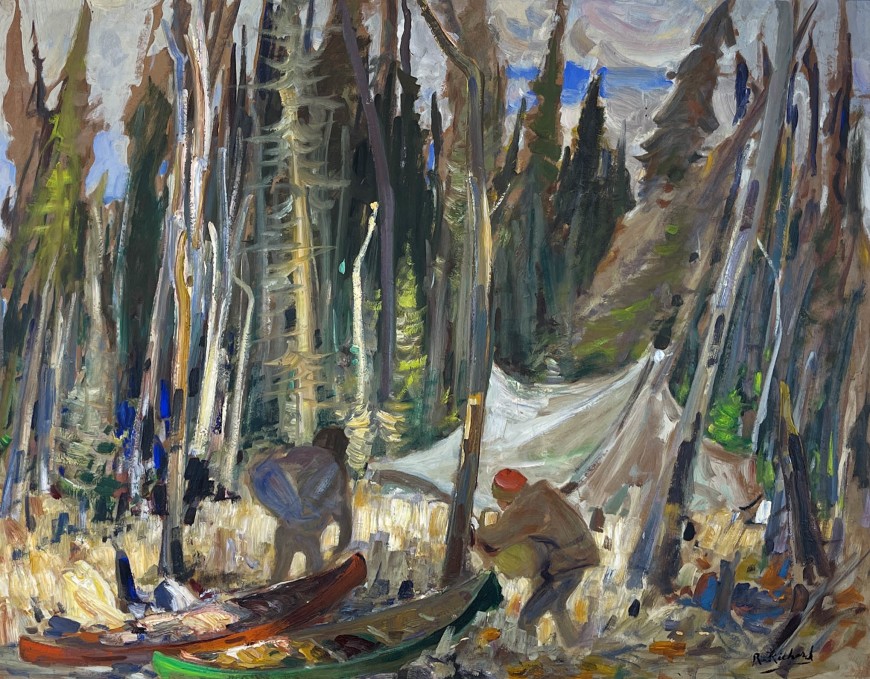-
Œuvres d'art
René RichardTrappers’ encampment1895-1982Oil on hard board28 1/4 x 36 in
71.8 x 91.4 cmSoldInscriptions
signed, 'R.Richard' (lower right)Provenance
Private collection, Bromont, Quebec;
Estate of the above.
René Richard is a legendary artist, one who was a genuine trapper in the true sense of connotation. In 1909, Richard emigrated with his parents to Canada from Switzerland. After two years in Montreal, the family moved to Cold Lake, Alberta. The exposure to life in the great outdoors seduced Richard in his early teens. He spent the better part of 16 years as a trapper in Western Canada and the plein-air sketches he made during his wilderness expeditions would provide him with lifelong inspiration. His drawings of this period depict the unique experiences of the Canadian trapper and woodsman, of abandoned camps, the woodsman’s canoe, the burning campfire, the trapper's sled dogs, and the occasional glimpses of the camaraderie between trappers.
With the encouragement of Clarence Gagnon, Richard went to Europe to study drawing. Gagnon wrote, “He knows what he wants to do and his love for the wilds will make another Tom Thomson of him. [...] There is not a Canadian artist, dead or living, who has drawn or can draw in 5 minutes sketches to compare with those of Richard.”
An important body of René Richard’s work is a first-hand description of the life of a Canadian trapper traveling by canoe, on foot or dog sled in the wildernesses of Alberta, Saskatchewan, Manitoba, the Northwest Territories and later in Quebec. His work is an important contribution to the western Canadian narrative. As far as we know, it is one not previously described by a professional artist who was, or had been a genuine trapper, a trade heralded in the history of the development of Canada. Although Richard has long enjoyed iconic stature in Quebec, his significance to the legacy in art to Canada’s west, and northwest has not yet been fully appreciated.
From 1927 and with Clarence Gagnon’s encouragement, Richard, nicknamed “Slim,” spent three years studying art in Paris where he honed his draughtsmanship and used Gagnon’s studio.
Richard returned to Western Canada to paint, but the Depression forced him to seek once again a livelihood in trapping. In 1938, he joined Gagnon in Montreal but soon escaped the city to settle in Baie-Saint-Paul, purchased the former home of Clarence Gagnon in 1940 and devoted himself to painting, leaving charcoal and pastels to paint primarily in oils.
His landscapes from this period, rarely titled by Richard himself or, if so, with generic titles like ''Encampement indien”, are often misconstrued as Quebec vistas. In fact however, he regularly used as reference the fine drawings of his earlier trapping days in the 1930s in Western Canadian areas, including the Churchill River, Fort McMurray and Jasper regions. Of course, his legacy also boasts a strong and extensive body of work depicting the Charlevoix area where he delighted in the landscapes of Ungava, the Saguenay River, and the Quebec North Shore.
We invite you to read more about René Richard by visiting https://www.klinkhoff.ca/blog/6408.













